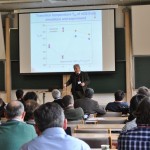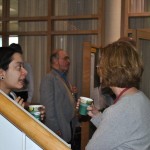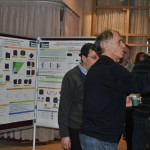18-21 March 2014, Daejeon, South Korea
article by Flynn Castles
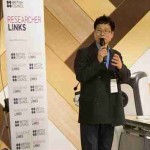
Academic co-organiser Dr Jinhae Park addresses delegates at the British Council Researcher Links Workshop on Soft Matter.
The stated aim of the British Council’s Researcher Links Workshops programme is to “bring together early-career researchers from UK and one of 18 partner countries to allow them to make international collaborations that improve the quality of their research”. In this context, early-career researchers are defined loosely as those who have been awarded a PhD within the last ten years. The subject of this particular workshop was Soft Matter: Analysis, Applications, and Challenges, and naturally included many working in the field of liquid crystals. The academic organisers were Dr Apala Majumdar (University of Bath, UK) and Dr Jinhae Park (Chungnam National University, South Korea), and the event was held at the National Institute for Mathematical Sciences in the city of Daejeon. The programme included 23 oral presentations by early-career researchers from the UK and South Korea, seven plenary talks from senior researchers, an intercultural session run by British Council, and a focused discussion on funding opportunities and future collaborations. The delegates also enjoyed a lively social programme, including a welcome dinner hosted by the British council in Seoul and a banquet hosted by the local organisers in Daejeon. With the British Council generously providing funding for travel and accommodation, the event represented an excellent opportunity for young researchers from the UK and South Korea to share their research and forge new international collaborations, in line with the programme’s aims.
From the perspective of the BLCS, it is perhaps particularly gratifying to see that Dr Apala Majumdar—who herself was a winner of the BLCS Young Scientist Award in 2012 and is currently a Reader at the University of Bath—is now involved with generating opportunities for young liquid crystal scientists in the UK and is providing leadership in the wider soft-matter community at an international level.
About the author: Dr Flynn Castles is a Research Fellow in the Department of Materials at the University of Oxford. Email: flynn.castles…at…materials.ox.ac.uk.

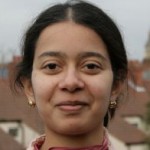
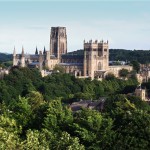
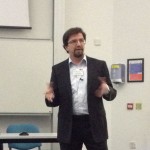
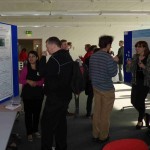
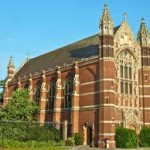 The annual meeting of the BLCS this year took place on 25-27 March 2013 in the picturesque Selwyn College at the University of Cambridge – a place with perfectly manicured lawns and catering staff we’re not like to forget for quite some time. This year the BLCS conference was to lead directly onto an afternoon mathematics session held by the Isaac Newton Institute, which proved popular. As usual the whole event was alive with exciting and enthusiastic talks, followed by equally lively discussions in the bar afterwards!
The annual meeting of the BLCS this year took place on 25-27 March 2013 in the picturesque Selwyn College at the University of Cambridge – a place with perfectly manicured lawns and catering staff we’re not like to forget for quite some time. This year the BLCS conference was to lead directly onto an afternoon mathematics session held by the Isaac Newton Institute, which proved popular. As usual the whole event was alive with exciting and enthusiastic talks, followed by equally lively discussions in the bar afterwards!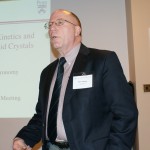
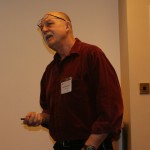 The first ever BLCS Distinguished Lecturer title was given to Professor Peter Collings, who did not disappoint with his talk ‘The Assembly/Disassembly Kinetics and Elasticity of Chromonic Liquid Crystals,’ overviewing some of the work he and his group have completed on chromonic liquid crystals. This talk was swiftly followed by Professor Gordon Tiddy who gave a memorable talk full of dry wit and good humour about his own experiences with chromonic liquid crystals and the dye sunset yellow. Professor Peter Palffy-Muhoray kept the audience enthralled with this year’s Sturgeon Memorial Lecture, for which he gave a talk entitled ‘Solid Liquid Crystals’ (the term ‘liquid crystal’ clearly wasn’t oxymoronic enough) which included quite amazing videos of liquid crystal elastomer films with the ability to swim and fly.
The first ever BLCS Distinguished Lecturer title was given to Professor Peter Collings, who did not disappoint with his talk ‘The Assembly/Disassembly Kinetics and Elasticity of Chromonic Liquid Crystals,’ overviewing some of the work he and his group have completed on chromonic liquid crystals. This talk was swiftly followed by Professor Gordon Tiddy who gave a memorable talk full of dry wit and good humour about his own experiences with chromonic liquid crystals and the dye sunset yellow. Professor Peter Palffy-Muhoray kept the audience enthralled with this year’s Sturgeon Memorial Lecture, for which he gave a talk entitled ‘Solid Liquid Crystals’ (the term ‘liquid crystal’ clearly wasn’t oxymoronic enough) which included quite amazing videos of liquid crystal elastomer films with the ability to swim and fly.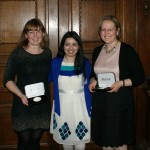
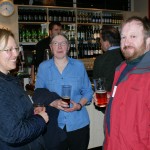 So with another BLCS AGM over and done with, what will Durham 2014 have in store for us?
So with another BLCS AGM over and done with, what will Durham 2014 have in store for us?